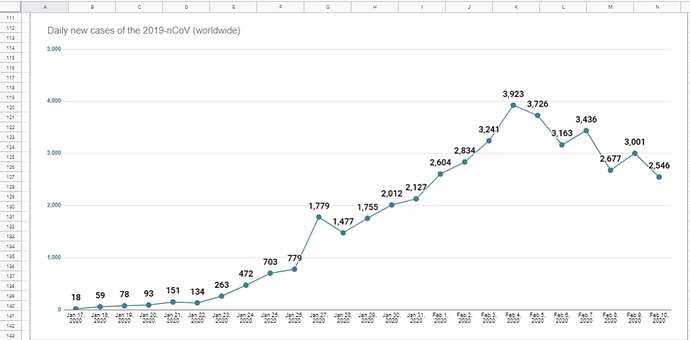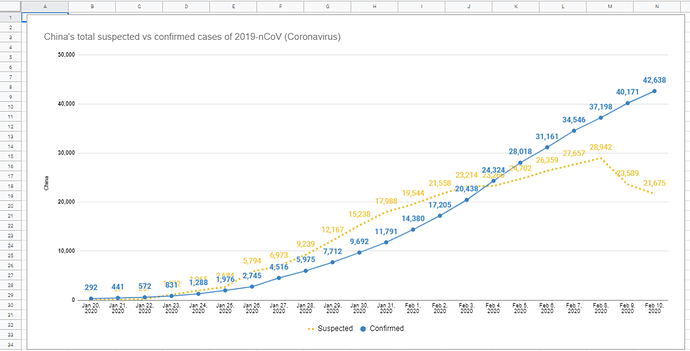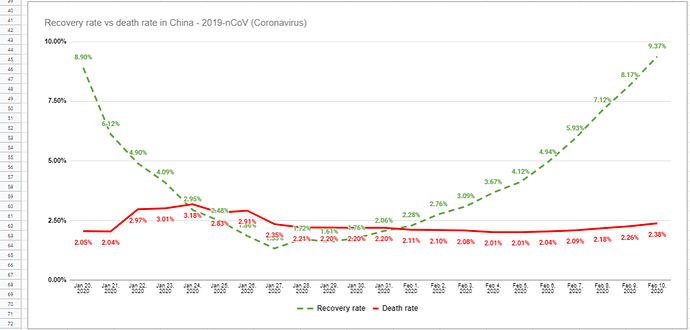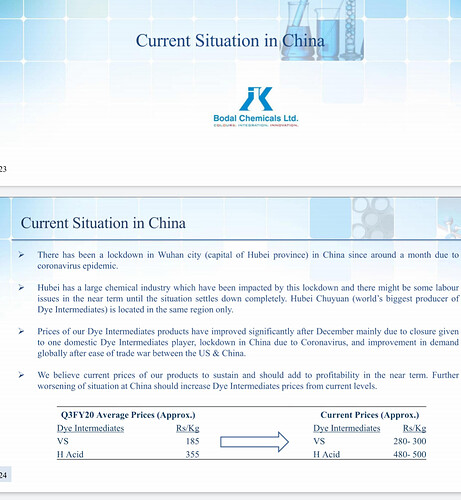CLSA Conference call with Coronavirus expert Overnight in Asia, we hosted a call with professor John Nicholls a clinical professor in pathology at the University of Hong Kong and expert on coronaviruses. He was a key member of the research team at the University of Hong Kong which isolated and characterized the novel SARS coronavirus in 2003. He’s been studying coronaviruses for 25 years (full bio here). The recording of the call can be found on our website HERE. Below are my notes transcribing the call. The first 30m are worth listening to.
Quick summary: look at the fatality rate outside of Wuhan - it’s below 1%. The correct comparison is not SARS or MERS but a bad cold which kills people who already have other health issues. This virus will burn itself out in May when temperatures rise. Wash your hands.
My notes from the call below:
Q&A Session with Professor Nicholls:
What is the actual scale of the outbreak? How much larger is it compared to the official “confirmed” cases?
People are saying a 2.2 to 2.4% fatality rate total. However recent information is very worthy - if you look at the cases outside of China the mortality rate is <1%. [Only 2 fatalities outside of mainland China]. 2 potential reasons 1) either china’s healthcare isn’t as good – that’s probably not the case 2) What is probably right is that just as with SARS there’s probably much stricter guidelines in mainland China for a case to be considered positive. So the 20,000 cases in China is probably only the severe cases; the folks that actually went to the hospital and got tested. The Chinese healthcare system is very overwhelmed with all the tests going through. So my thinking is this is actually not as severe a disease as is being suggested. The fatality rate is probably only 0.8%-1%. There’s a vast underreporting of cases in China. Compared to Sars and Mers we are talking about a coronavirus that has a mortality rate of 8 to 10 times less deadly to Sars to Mers. So a correct comparison is not Sars or Mers but a severe cold. Basically this is a severe form of the cold.
You mentioned a shortage of testing kit can you talk more about that?
There are two ways to detect a virus. 1) Through the genetic material – DNA or RNA or 2) to detect the protein of the virus. The rapid tests used in a doctors’ labs look at the protein. The problem with that is that you need an antibody to pick it up. And it takes 8-12 weeks to make commercial antibodies. So right now for the diagnostics tests they are using PCR which give you a turnaround in 1-2 hours. But then you need to run a machine and run 96 runs in 1 hour but then you have to a batch of samples so there’s another delay of 5-6 hours for patient presentation. So that will lead to some problems you can’t turnaround in 5-10m which is what you want when a patient shows up to the emergency room. Because right now you also have influenza going around so what you want is to be able to rule out influenza so you can treat the patients correctly for coronavirus. So that may be why they missed some of the earlier cases.
Your colleague at HK university estimated that the size of the infected population on Jan 25th was 75K with a doubling time of 6.4 days. So by feb first we would have 150k infected. How accurate do you think these models are and how accurate have they been in the past?
Those figures did not take into account restriction on travel, quarantine etc… These reports are likely on the high side. This is not taking into account social distancing. Historically these models have not been all that accurate.
When do you think this thing will peak? Three things the virus does not like 1) sunlight 2) temperature and 3) humidity. To make you guys really worried. A coronavirus can survive on a stainless steel surface for 36 hours. It hangs around for quite a bit.
Sunlight will cut the virus ability to grow in half so the half-life will be 2.5 minutes and in the dark it’s about 13m to 20m. Sunlight is really good at killing viruses. That’s why I believe that Australia and the southern hemisphere will not see any great infections rates because they have lots of sunlight and they are in the middle of summer. And Wuhan and Beijing is still cold which is why there’s high infection rates.
In regards to temperature, the virus can remain intact at 4 degrees or 10 degrees for a longer period of time. But at 30 degrees then you get inactivation. And High humidity the virus doesn’t like it either. That’s why I think Sars stopped around May and June in 2003 – that’s when there’s more sunlight and more humidity. The environment is a crucial factor. The environment will be unfavourable for growth around May. The evidence is to look at the common cold – it’s always during winter. So the natural environment will not be favourable in Asia in about May.
The second factor is that of personal contact. With Sars once it was discovered that the virus was spread through the fecal oral route there was much less emphasis on the masks and far more emphasis on disinfection and washing hands. HK has far more cleanliness (than China) and they are very aware of social hygiene. And other countries will be more aware of the social hygiene (than China). So in those countries you should see less outbreaks and spreading. A couple days ago the fecal-oral route of transmission was confirmed in Shenzhen. In China, most of the latrines are open- there’s more chance of phermites (?) being spread. But in other countries the sanitations systems tends to closed. My personal view is that this will be a bad cold and it will all be over by May.
People talk about the vaccine and this is the big problem that people get from movies. Where in the movie they come out with a vaccine and then three days later it’s all over the world and everybody is saved. In reality this does not happen because for a vaccine you need to go through clinical trials – is it safe and will it work. The last thing you want to do is rush a vaccine too early. If you get any severe reactions, then the anti-vaxxer will just say “I told you so”. You are talking about a working vaccine in 1 to 2 years. With SARS, in 6 months the virus was all gone and it pretty much never came back. SARS pretty much found a sweet spot of the perfect environment to develop and hasn’t come back. So no pharmaceutical company will spend millions and millions to develop a vaccine for something which may never come back. It’s Hollywood to think that vaccines will save the world. The social conditions are what will control the virus – the cleaning of hands, isolating sick people etc…
What do we know about the transmission rate? It’s been estimated around 2.2 to 2.68. What percent of the patients are transmitting while being asymptomatic?
This is a big problem when you talk about asymptomatic that means you have a good diagnostic test- where you can say they are asymptomatic (which we don’t have with this virus).
We actually looked at this with MERS where people were saying it had a high fatality. We went to Camel abattoirs and took serums from the abattoir workers and found that quite a few had low infections with no symptoms. This is what should have been done at the initial stages at the seafood market. But to do that you need a good diagnostic test. A good diagnostic test is necessary to determine to the transmission rate. Now we have normal human airways and we can now look at how long it takes the virus to replicate in that environment. And that will be very useful to determine those who are asymptomatic carriers.
Any sense of whether the estimates of the reproductive number the Ro of 2.5 or 2.7. Do you think that is high or low. What does that mean?
Measles was about 10-15 and influenza is just below 2. I think it’s about 2.2 as it’s being transmitted within the community.
Have we seen any super spreaders? We saw that with Sars and Mers.
There’s talk about that but the epidemiologists are still overwhelmed so no clear answer. But I don’t think there are any super spreaders.
What is the percentage of people transmitting the virus while being asymptomatic?
Unlike SARS, patients were symptomatic at about day 5, some of these cases may be asymptomatic until about day 7. That’s based on the first publications. Asymptomatic is probably the first 5 days.
There’s a paper published looking a familial cluster with a boy who was shedding the virus and he was asymptomatic.
That’s something about kids and we saw this with Sars. Very few kids had very severe disease. We are trying to determine if this is a virus which we call low (unintelligible) kind of inducer or high (unintelligible) kind of inducer. SARS is high [unintelligible] kind of inducer. This means that when it infects the lower part of the lung, the body develops a very severe reaction against it and leads to lots of inflation and scarring. In SARS what we found is that after the first 10 to 15 days it wasn’t the virus killing the patients it was the body’s reaction.
We are doing testing on this now. Is this virus in the MERS or SARS kind picture or is this the other type of virus which is a milder coronavirus like the NL63 or the 229. I think this will be a mild (unintelligible) kind inducer.
Case fatality is about 2.5% or so? Do you expect this to change over time? And are you seeing any difference among the young population and older population in terms or mortality rate?
SARS went really for people in their 30 or 50 years. And MERS on the other hand basically is if you have co-morbidity – try and find somebody in the middle east who does not smoke or does not have high blood pressure etc… The data coming out of China seems to indicate that it’s those with the co-morbidity are most at risk. For the seasonal influenza that’s also what we find. It’s the people with the co-morbidity that have the increase mortality rate






